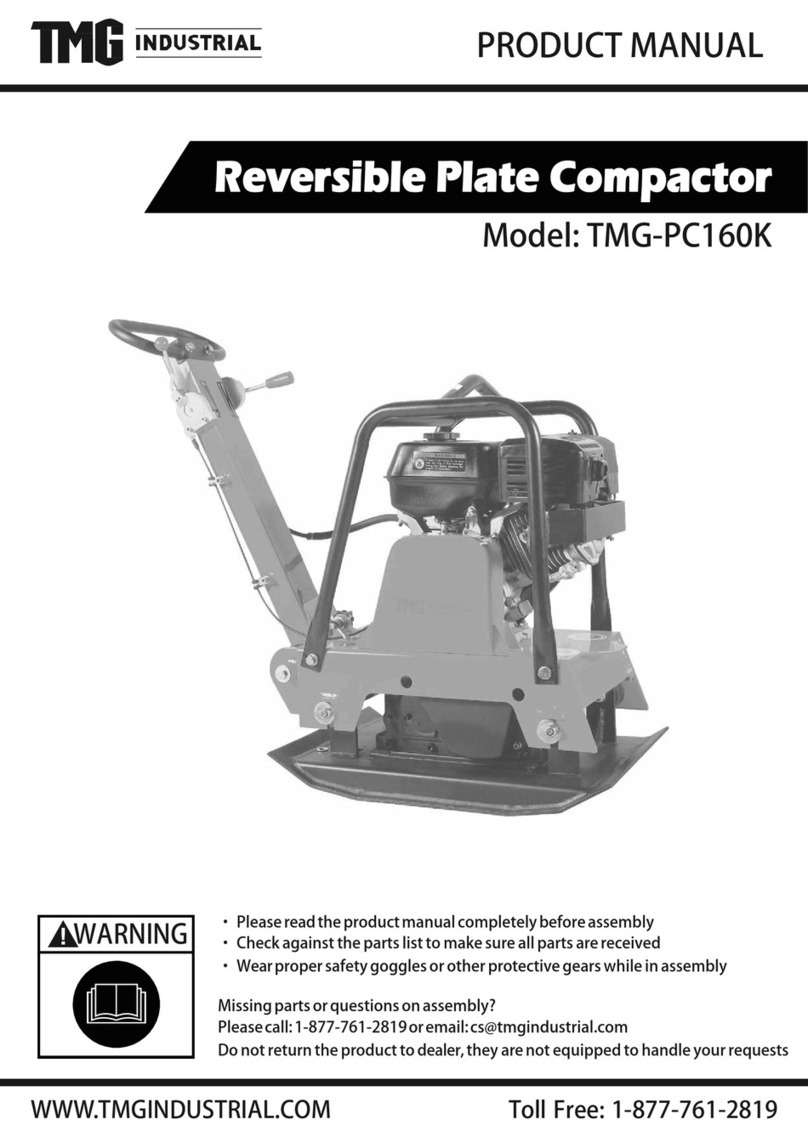►Avoid eating, drinking, and using tobacco products
in areas where there is dust or fumes.
►Wash your hands and face thoroughly as soon as
possible upon leaving the exposure area, and
always before eating, drinking, using tobacco
products, or making contact with other persons.
►Comply with all applicable laws and regulations,
including occupational health and safety
regulations.
►Participate in air monitoring, medical examination
programs, and health and safety training programs
provided by your employer or trade organizations
and in accordance with occupational health and
safety regulations and recommendations. Consult
with physicians experienced in relevant
occupational medicine.
►Work with your employer and trade organization
to reduce dust and fume exposure at the worksite
and to reduce the risks. Effective health and safety
programs, policies and procedures for protecting
workers and others against harmful exposure to
dust and fumes should be established and
implemented based on advice from health and
safety experts. Consult with experts.
DANGER Exhaust gas hazard
The exhaust gas from the machine’s combustion
engine contains carbon monoxide which is
poisonous, and chemicals known to the State of
California and other authorities to cause cancer, birth
defects, or other reproductive harm. Inhalation of
exhaust fumes can cause serious injury, illness, or
death.
►Never inhale exhaust fumes.
►Ensure good ventilation (extraction of air by fan if
necessary).
WARNING Projectiles
Failure of the work piece, of accessories, or even of
the machine itself may generate high velocity
projectiles. During operating, splinters or other
particles from the compacted material may become
projectiles and cause personal injury by striking the
operator or other persons. To reduce these risk:
►Use approved personal protective equipment and
safety helmet, including impact resistant eye
protection with side protection.
►Make sure that no unauthorised persons trespass
into the working zone.
►Keep the workplace free from foreign objects.
WARNING Motion hazards
When using the machine to perform work-related
activities, you may experience discomfort in the
hands, arms, shoulders, neck, or other parts of the
body.
►Adopt a comfortable posture whilst maintaining
secure footing and avoiding awkward off-balanced
postures.
►Changing posture during extended tasks may help
avoid discomfort and fatigue.
►In case of persistent or recurring symptoms,
consult a qualified health professional.
WARNING Vibration hazards
Normal and proper use of the machine exposes the
operator to vibration. Regular and frequent exposure
to vibration may cause, contribute to, or aggravate
injury or disorders to the operator’s fingers, hands,
wrists, arms, shoulders and/or nerves and blood
supply or other body parts, including debilitating
and/or permanent injuries or disorders that may
develop gradually over periods of weeks, months, or
years. Such injuries or disorders may include damage
to the blood circulatory system, damage to the
nervous system, damage to joints, and possibly
damage to other body structures.
If numbness, persistent recurring discomfort, burning
sensation, stiffness, throbbing, tingling, pain,
clumsiness, weakened grip, whitening of the skin, or
other symptoms occur at any time, when operating
the machine or when not operating the machine, stop
operating the machine, tell your employer and seek
medical attention. Continued use of the machine after
the occurrence of any such symptom may increase
the risk of symptoms becoming more severe and/or
permanent.
Operate and maintain the machine as recommended
in these instructions, to prevent an unnecessary
increase in vibration.
The following may help to reduce exposure to
vibration for the operator:
►Let the machine do the job. Use a minimum hand
grip consistent with proper control and safe
operation.
►If the machine has vibration absorbing handles,
keep them in a central position, avoid pressing the
handles into the end stops.
►When the percussion mechanism is activated, the
only body contact with the machine you should
have are your hands on the handle or handles.
Avoid any other contact, for example supporting
any part of the body against the machine or
leaning onto the machine trying to increase the
feed force. It is also important not to keep the start
and stop device engaged while extracting the
machine from the broken work surface.
© 2011 Atlas Copco Construction Tools AB | No. 9800 1139 01 | 2011-04-01
Original instructions
8
LT 800Safety and operating instructions




























